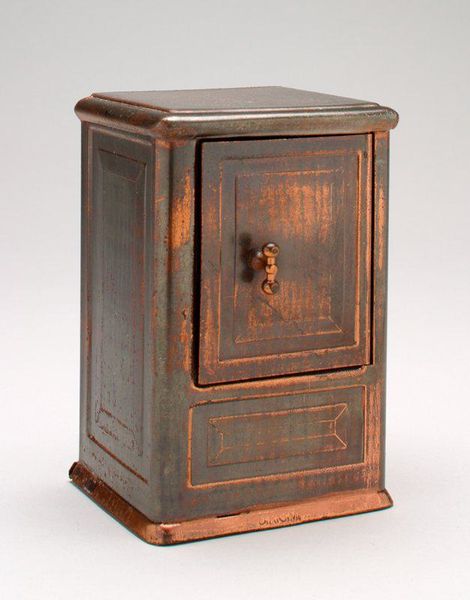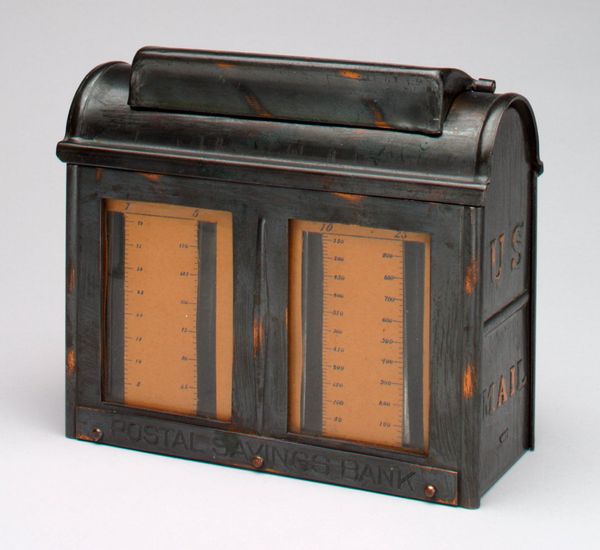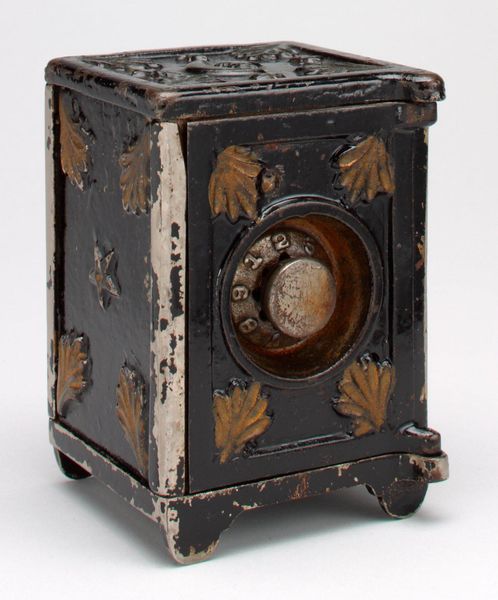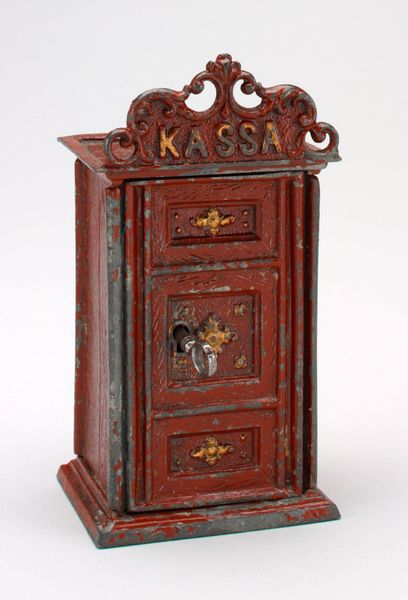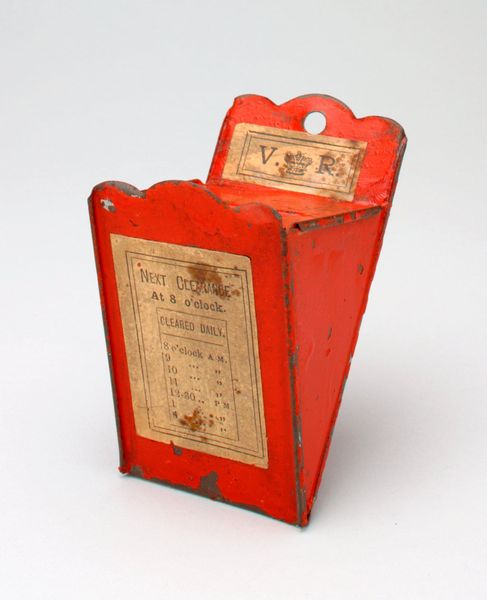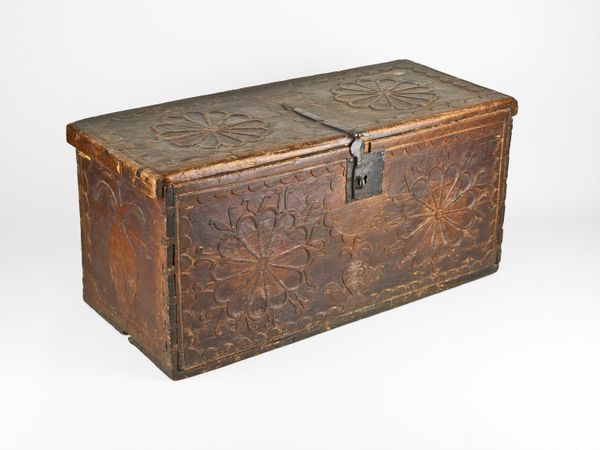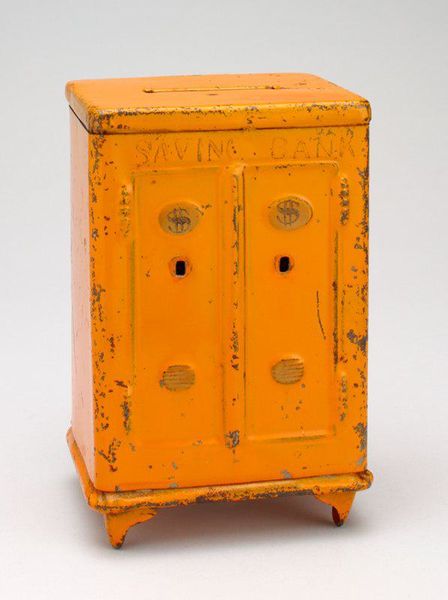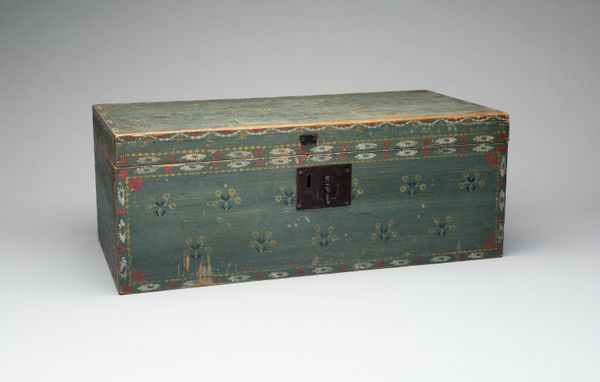
metal, bronze, sculpture
#
portrait
#
metal
#
product displayed
#
sculpture
#
bronze
#
figuration
#
traditional architecture
#
product showcase
#
sculpture
#
ceramic
#
decorative-art
Dimensions: 6 1/4 x 4 3/16 x 3 5/8 in. (15.88 x 10.64 x 9.21 cm) (top closed)9 x 4 3/16 x 3 5/8 in. (22.86 x 10.64 x 9.21 cm) (top open)
Copyright: Public Domain
Curator: Editor: Here we have a metal sculpture, a mechanical bank titled "-United States Bank-," dating back to approximately 1880. I find the juxtaposition of the bank’s robust, industrial form and the delicate portrait rather curious. What strikes you about it? Curator: What jumps out to me is the intersection of industry and domestic life embodied in this object. The bank itself, clearly a product of industrial manufacture using cast iron or steel, served as both a receptacle for capital and a decorative object for the home. Editor: So, it is beyond just the material? Curator: Precisely. Consider the production: cast iron from mines and factories, potentially employing immigrant labor in harsh conditions. Then, this is placed in a domestic sphere to encourage saving habits, linking production and consumption. The image too – who manufactured that printed card, what was their social standing and means of production? What was their skill level? These elements are crucial to its full significance. Editor: I see. So, it’s less about the aesthetic qualities and more about the historical processes embedded in it? Curator: Not entirely. The aesthetic choices, the deliberate imitation of a grand architectural style of the period on such a small functional object. But importantly how they connect to manufacturing and societal ideologies regarding value, labor, and aspirations during a specific historical moment. The mechanical aspect also draws attention to industry, mass production, and the role of financial institutions in everyday life. Editor: That's a compelling way to look at it. It recontextualizes the piece entirely, emphasizing its connection to labor and economics rather than pure artistry. Curator: It really shows you how to think about an object from different perspectives, I will take a peek at objects differently now too.
Comments
No comments
Be the first to comment and join the conversation on the ultimate creative platform.
